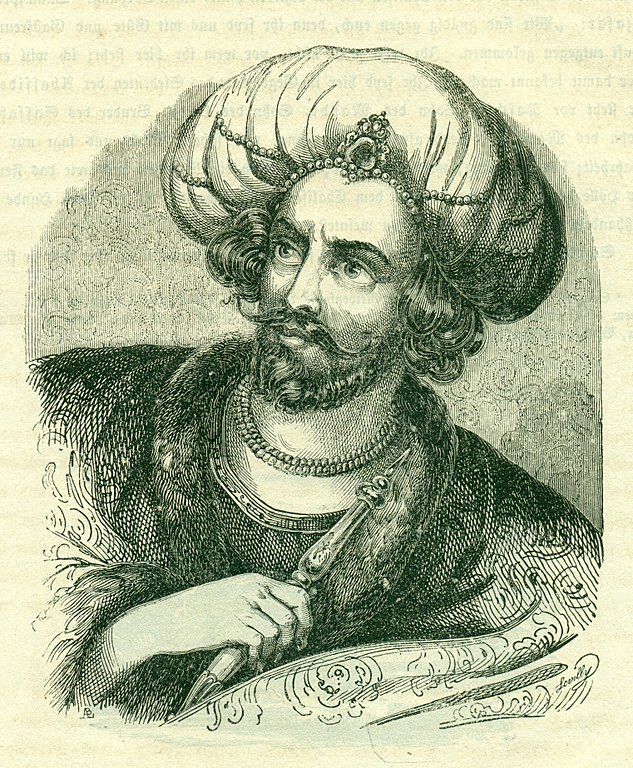Abdul Gumud
Abdul Gumud (/ɑbˈdʊl ɡuːˈmuːd /; c. 771 - 855), formally Tariq Abdul Ghumud (Nemidic: Ταριϙ αβδ αλˈΓυμυδ, riadicized Tariq abd al’Ghumud), was a ninth centurí Nemedian scholar, said to be the author of two prominent compilations of occult knowledge. A self-styled “poet,” he was known in his time as a philosopher, astrologer, alchemist, sorcerer and necromancer, among other occult disciplines.
Shortly before his death, he compiled a book of the secret knowledge he had discovered during his life, which he called al'Hikmat Sirun al'Amiwat, now commonly referred to as the Nekrómystikón. He also wrote a lesser-known companion volume which has come to be known as the Nekróneiraikón, consisting of 700 prophesies, some of which are said to be relevant even today.
Along with his long-time student, Wahid alˈNajem, he traveled widely during his lifetime, as far away as Carman, Cyrontia and Shinaria, and for several years resided in the Kasbah as a science advisor and court astrologer to the Nemedian Sultan Umar III. He spent much of his time studying alchemy and divination. He claimed to have visited strange, exotic and supernatural places unknown to ordinary men in his quest for the secrets of the universe. He is said to have compiled the largest private library ever seen.
Name
The name Tariq abd alˈGhumud is almost certainly a pseudonym, and it is presumed Gumud’s true name will never be known. Tariq carries the Nemedian meaning of “one who knocks on the door.” The surname abd alˈGhumud translated literally as “follower of the obscure.” Dr. Desmond Hynes, Professor of Eastern Antiquities at the University of Naus has suggested the actual meaning is “follower of the obscure [god].”Early Life
Details of Gumud’s early life remain for the most part unknown. He is believed to have been born c. 771 in the city of Chaam. According to the Hyat abd alˈGhumud (“Life of Abdul Ghumud”), written in 873 by his student, Wahid alˈNajem, he was orphaned as an infant and raised in the harem of the ˈAmir, only to be turned out as a very young boy for an unknown offense.Gumud claimed to have been taken then into the desert by ghúls, who raised him for ten years and taught him the secrets of blood and flesh, and the mysteries of the mhuns and the night stars. He first appears in the historical record in 799, in Chaam after miraculously returning alive from his long sojourn in the desert, where he is reported to be performing healing miracles.
Career
During his long life, Abdul Gumud traveled extensively, visiting the great cities to the north of the Jeneb in Carman, Cyrontia and Shinaria. He studied in the great ancient libraries, and made copies of their rarest scrolls. He claimed to have visited many unknown places, including secret catacombs beneath the city on Tenjin, and a city on a distant planet.Although nominally Mahbubist, Gumud’s writings indicate he was a follower of an ancient god which pre-dated even the gods of the Aigúpiti. Much of his life’s work appears to have been devoted to finding ways to connect with the powers of that god.
He claimed to have visited the Lost City of Sabhadiq, where he discovered the Amulet of Sutekh. He is also said to have owned a magic carpet called alˈSajaadˈsihria.



Comments